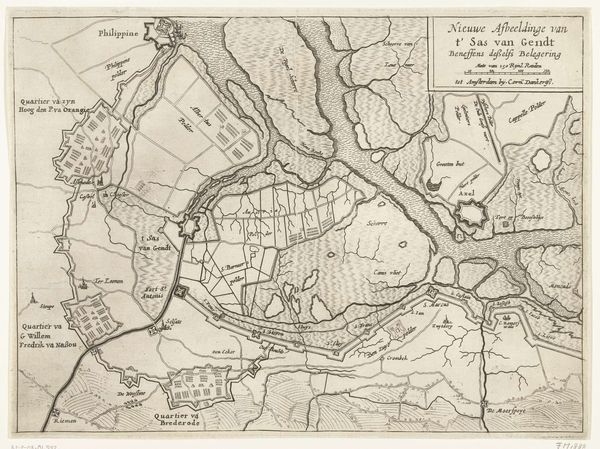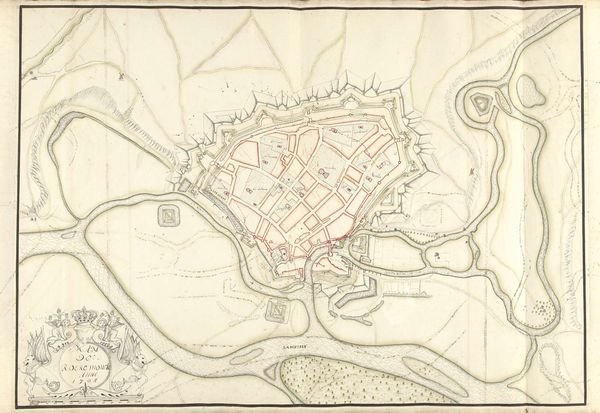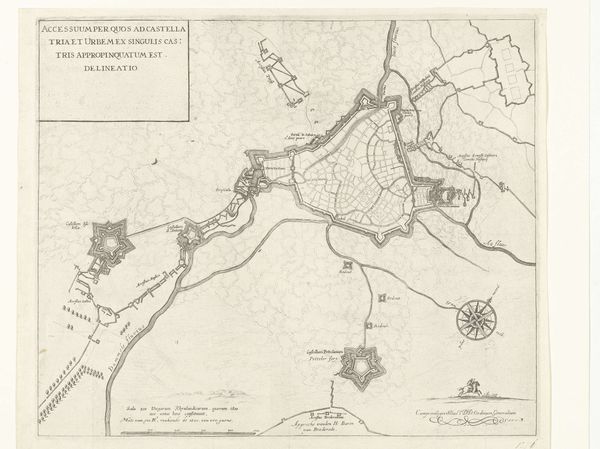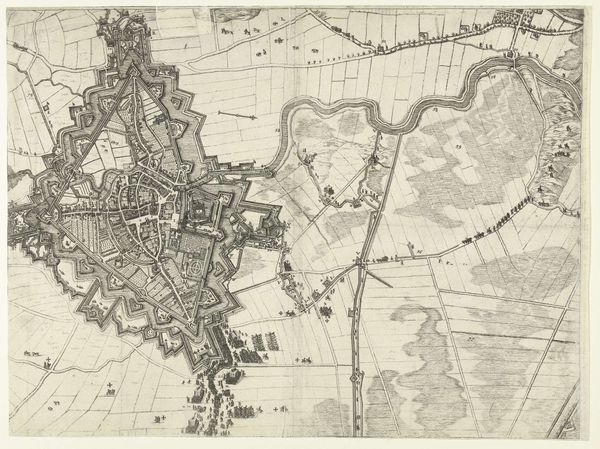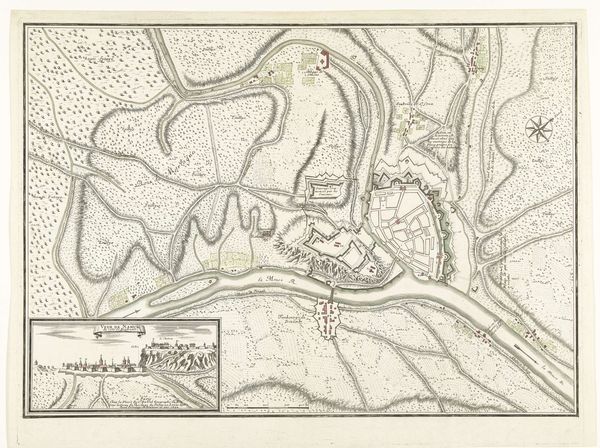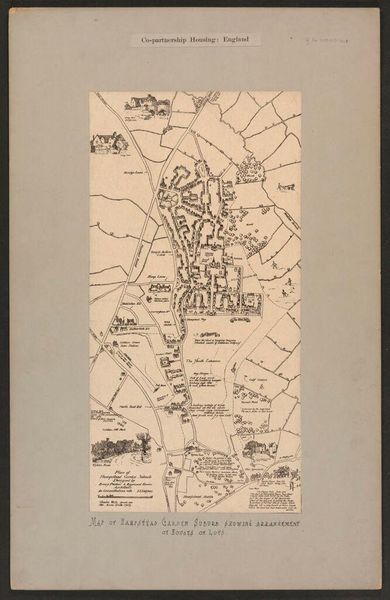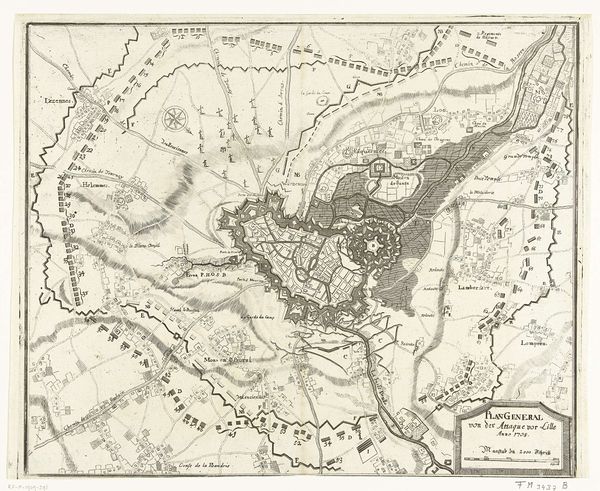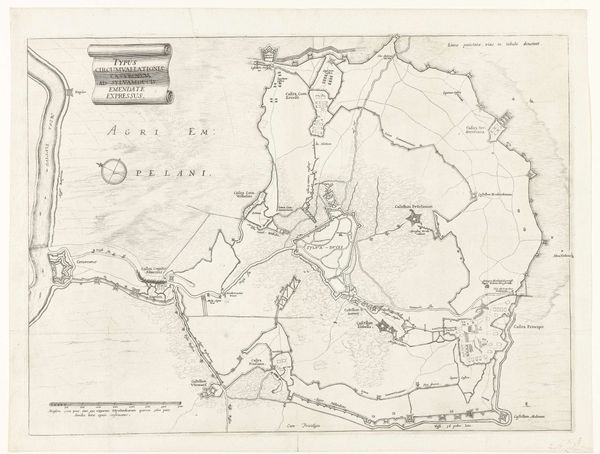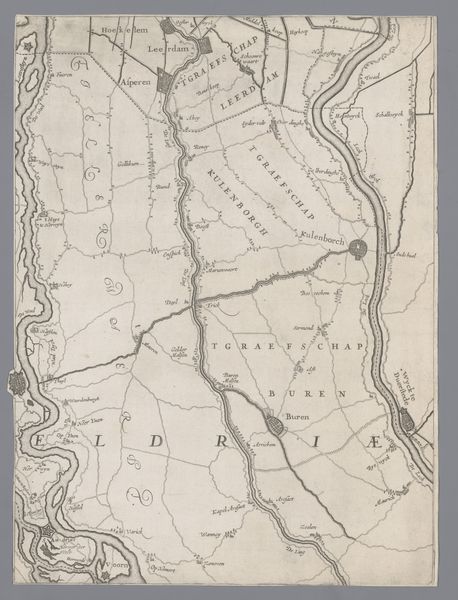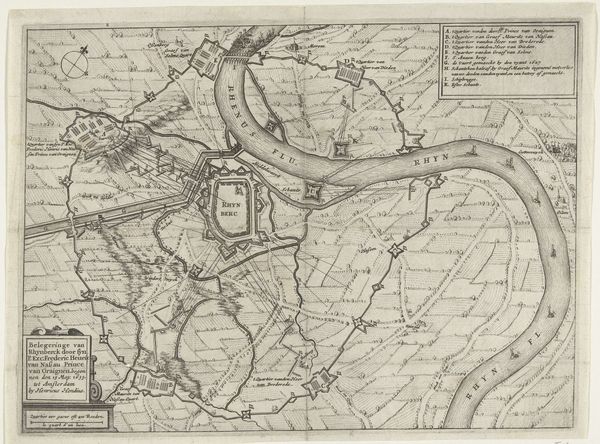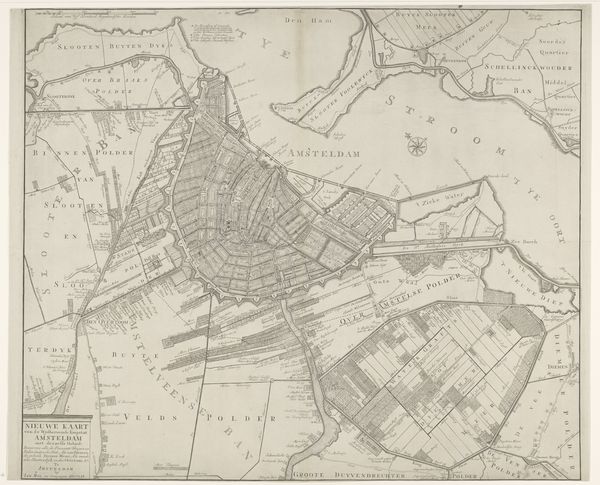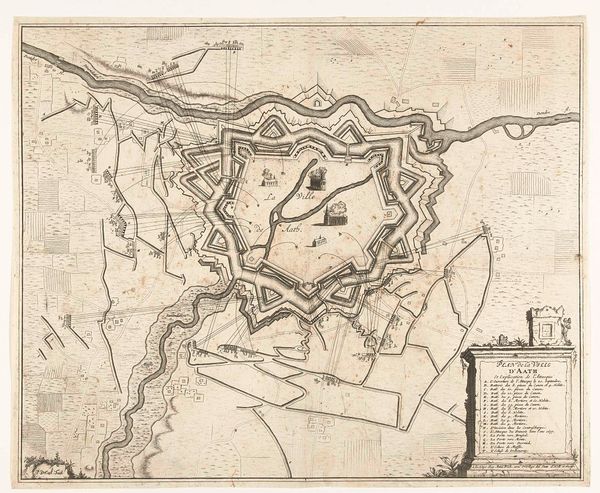
drawing, print, paper, engraving
#
drawing
#
baroque
# print
#
landscape
#
paper
#
line
#
cityscape
#
genre-painting
#
history-painting
#
academic-art
#
engraving
Dimensions: height 288 mm, width 478 mm
Copyright: Rijks Museum: Open Domain
Editor: Here we have "Beleg van Bouchain, 1711," a drawing and print, probably an engraving, by an anonymous artist from 1711. It looks like a meticulously detailed city plan, but also something more... historical. I wonder, what kind of story is it telling us? Curator: This image, depicting the siege of Bouchain, isn't simply a neutral map. It's a political document, meticulously crafted to project power. Notice the precise lines and ordered arrangement, giving a sense of control and inevitability to the Allied forces. The engraving would have served as a visual record, justifying the military campaign and bolstering public support for the war effort. How do you think the general public at the time would react to this image? Editor: I imagine they’d see it as a very technical depiction and be more willing to see this plan carried out? Curator: Precisely. Prints like these were circulated widely. But what are we really seeing? The bird’s-eye perspective wasn’t accidental either. It presents an almost godlike view, further reinforcing the dominance and strategic brilliance of the commanders. Consider the act of recording this information too. What does the commissioning of this type of work suggest to you? Editor: So, it’s not just a map, but a form of propaganda, or maybe even early journalism? Highlighting military might. It makes you wonder how accurate it actually is. Curator: Indeed! It serves as a powerful reminder that visual representations of conflict are never entirely objective. Analyzing its visual rhetoric can reveal a great deal about the socio-political climate in which it was produced. What has most surprised you about this artwork? Editor: I hadn't considered the public relations aspect. Now, looking at it, I see how a seemingly objective image can be a strategic communication. Curator: Exactly. Now you can ask, who controlled that communication, and how it has shaped collective memory. It has been an absolute pleasure guiding you on this adventure.
Comments
No comments
Be the first to comment and join the conversation on the ultimate creative platform.
